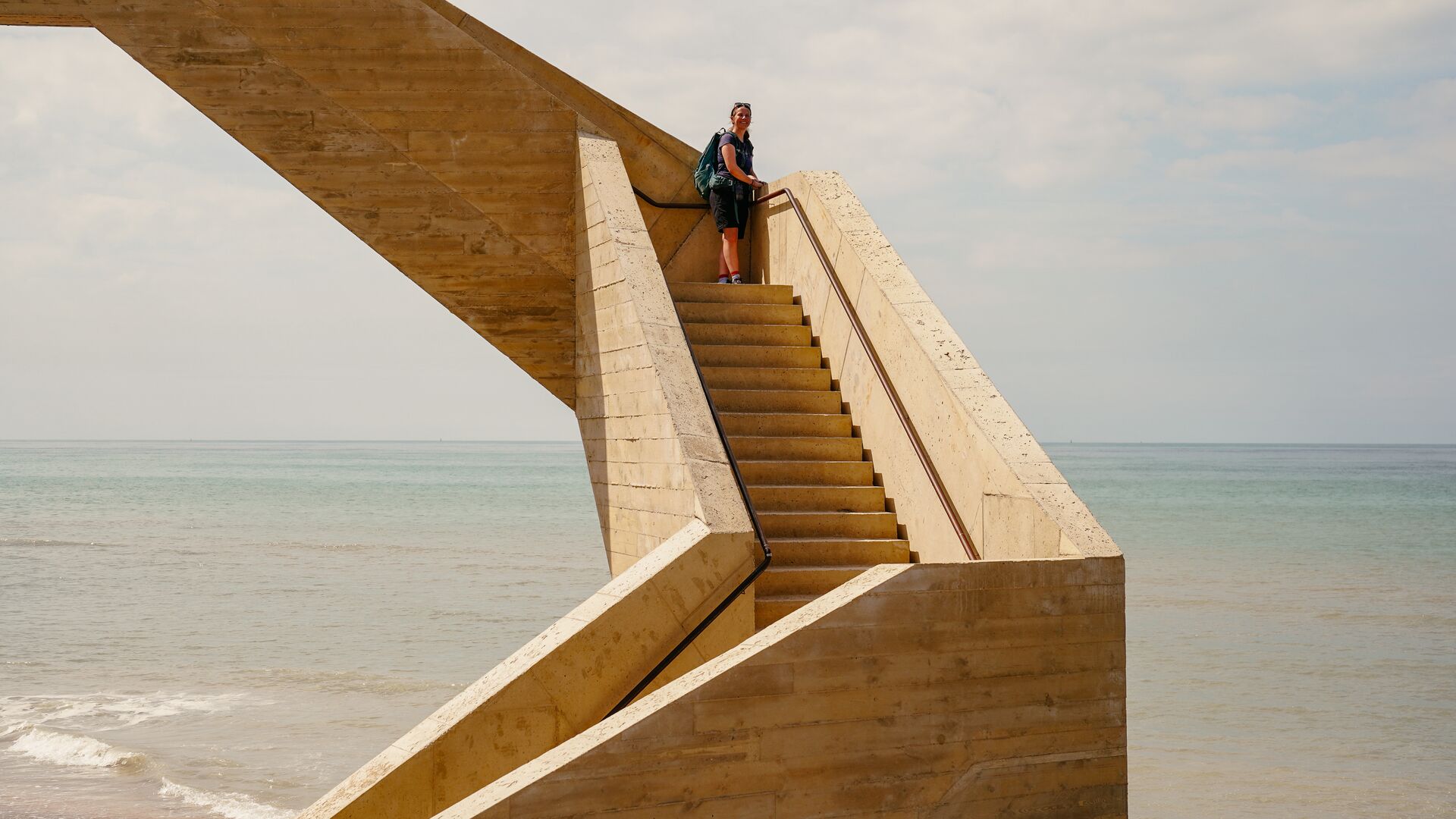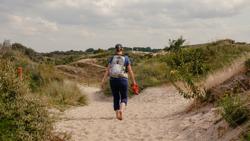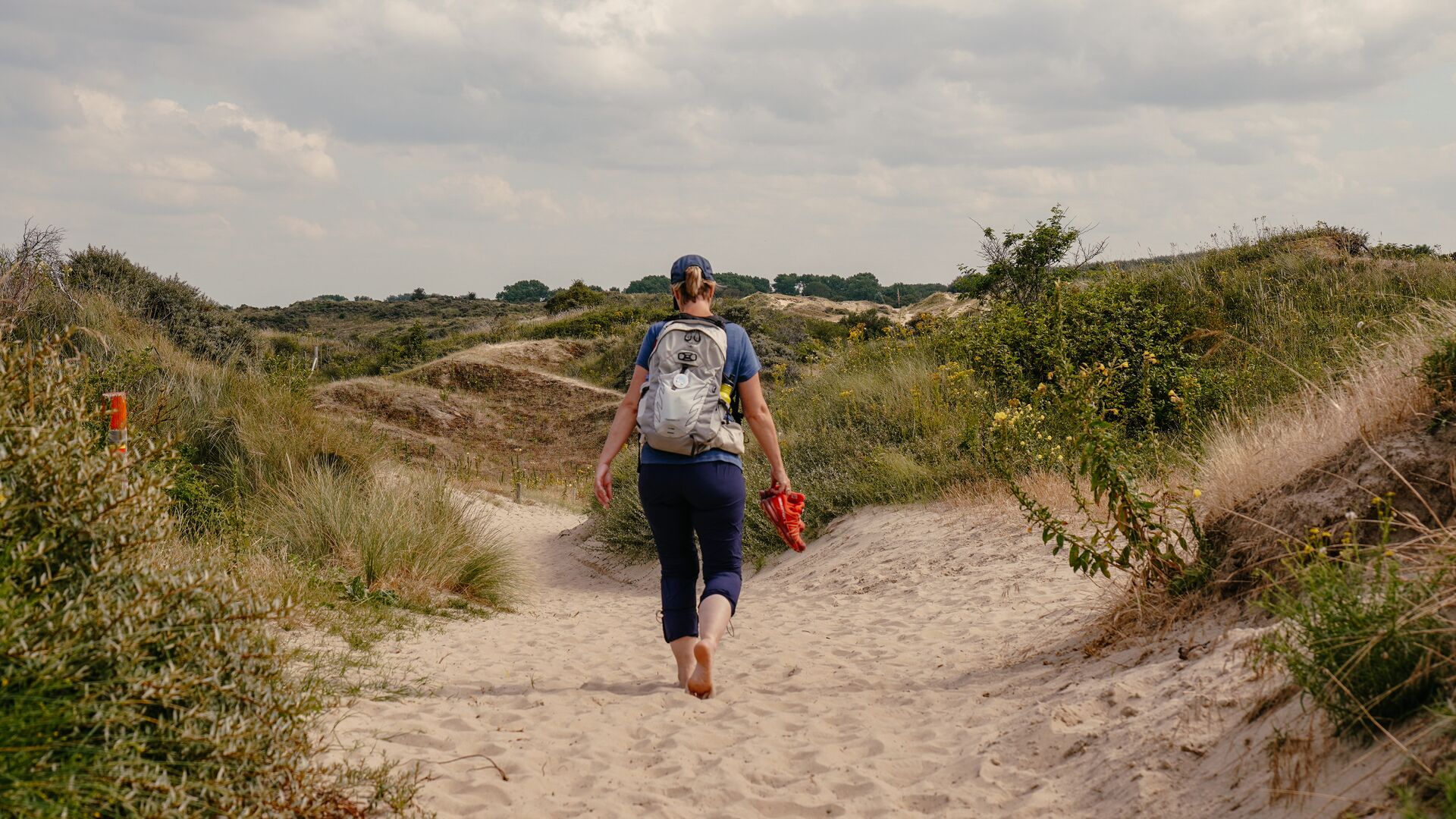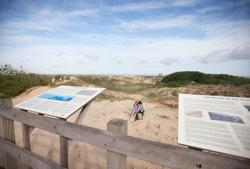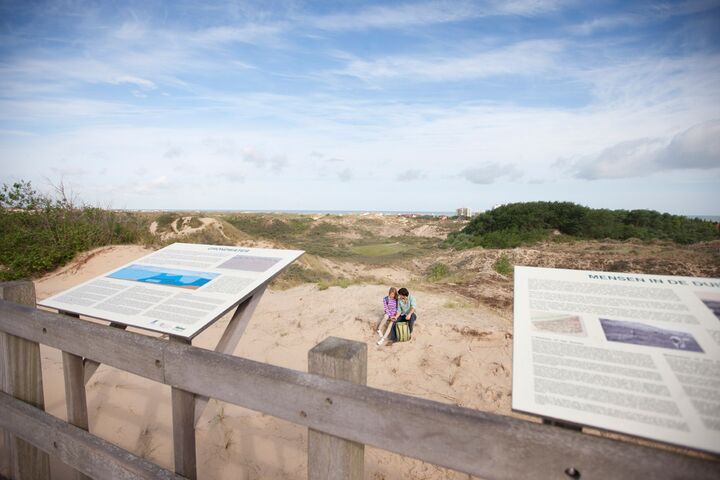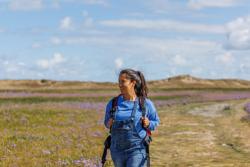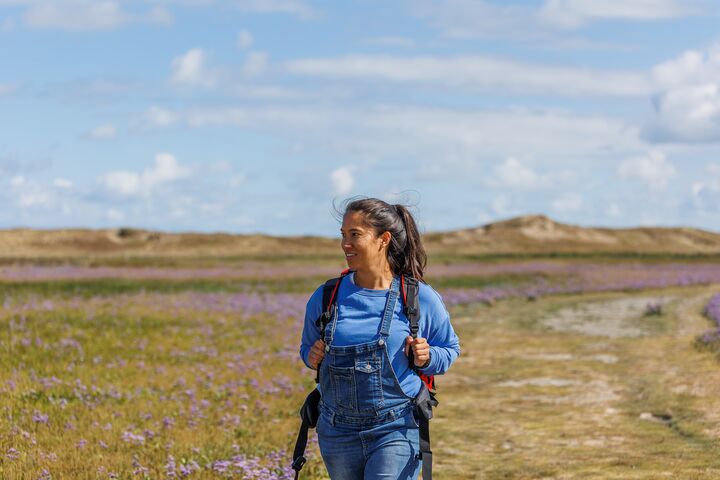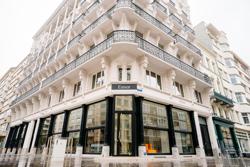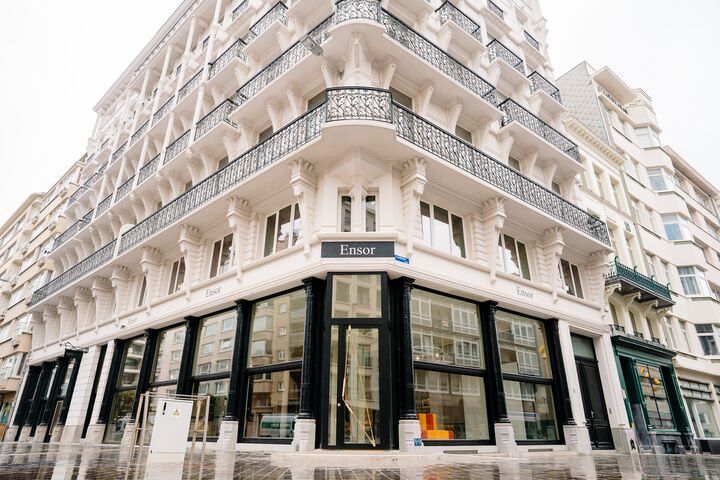Westhoek walking route
Start
Start: Duinpanne visitors' centre
Before putting on our hiking boots, we'll take a quick look inside the Provincial Visitors' Centre and Duinpanne Nature Education Centre. If you want to learn more about this region's unique dune, coastal and marine life, you've come to the right place. At the North Sea Aquarium, you'll spot a host of hidden life-forms. In turn, the permanent exhibition ‘Sea Change’ will tell you more about themes such as life on the sea floor, biodiversity and the users of the sea. It also doesn't shy away from the topic of pollution. Our smallest visitors can go on a scavenger hunt or romp around in the nature playground. Our walk then continues into the Calmeyn forest.
De Westhoek nature reserve
The Flemish Nature Reserve De Westhoek is one of the unspoilt and most impressive areas of dunes on the Flemish coast. Did you know that this spot was voted the most beautiful location for a walk in West Flanders in 2024? In this vast 345-hectare dune landscape, you will find almost all types of dune vegetation in one place. Of particular note are the two artificial ‘slufters’ – openings in the dunes that allow salt water from the sea to pass through during spring tides or storm surges, creating a salty plain that is home to unique fauna and flora. Nature is in full flow here. Even the Scottish highland cattle and Konik horses play their part in managing this natural environment. As you make your way along this walking route, you'll also come across a nice vantage point. Will you manage to spot a European stonechat, a hen harrier or a chiffchaff? We then continue our walk by following the Grenspad (Border Trail), which literally forms the border between Belgium and France.
Christophorus
Every three years, an art exhibition known as the Beaufort Triennial introduces new sculptures on or near the beach, somewhere along the coastline of Flanders. The Beaufort Sculpture Park is an enduring reminder of this event, because it has already provided a permanent home for over 40 artworks from previous iterations of the Triennial. From the walkway, you can see Christophorus’, the five-times' life-size statue by the Dutch artist Gerhard Lentink, depicting Saint Christopher carrying pilgrims across a dangerous river. That is the reason why part of the torso of this patron saint of travellers incorporates a symbolic seat. Over the years, this wooden artwork, which was produced when Beaufort Triennial was held for the first time, has taken on a warm, distinctive patina. We will then leave this giant behind continuing to wade through the dunes as if dragging his way through the wild swell of the sea and will continue on our journey.
Cast Away
Beaufort artworks here seem to stare out from around every corner, you could say. When producing his work ‘Cast Away’, the sculptor Michael Rakowitz delved into the evacuation of Allied troops from Dunkirk during Operation Dynamo in May 1940. The Belgian army then surrendered and thousands of soldiers were taken prisoner of war. The English ship HMS Wakeful that was carrying 640 Allied troops towards the English coast was torpedoed and is now a protected war grave on the Belgian seabed. Rakowitz asked locals to select objects associated with stories from the war and then incorporated them into a war memorial. Due to rising sea levels, it too will one day be underwater. As you may already have suspected, the work was also inspired by the movie ‘Cast Away’.
Westerpunt
A little further on, we see the ‘Westerpunt’, a six-meter-high architectural gem on the dike that is also the walking route towards France. Studio MOTO designed it as a symbolic connection between sea, dunes and man. At the top, you can enjoy stunning 360° views of the surrounding area. At high tide, part of the structure floods. When that happens, it literally seems like you're suspended ‘above’ the sea. Our walk now takes us back into the De Westhoek nature reserve.
Tip: Extend your walk with a stay in the cosy coastal village of De Panne.
Calmeynbos (forest)
Even in the early 1900s, people didn't shy away from a stiff challenge. Maurice Calmeyn, a major landowner and nature management pioneer, planted this 55-hectare forest in the dunes of De Panne. His aim was to demonstrate that planting trees is actually possible on sites located close to the sea. When formulating his forestation plans, he drew inspiration from the luxurious seaside resort of Paris-Plage in France and his efforts have clearly proved a success. Today, most of the Calmeynbos forest is owned by an Intercommunal Water Supply Company that supplies drinking water to the region, but you can still enjoy the shady forest trails before heading into the dunes.
Arrival: Duinpanne visitors' centre
Our journey brings us back to the Duinpanne Visitors' Centre once more. There's still enough time to enjoy a quick drink and a bite to eat in the bar. The foods on offer are healthy, hand-made, ecological, organic and fair-trade. If the weather is fine, you can enjoy them outside on the cosy terrace. In the recently opened Dune Garden, you can catch your breath once more by taking a stroll along the six different dune landscapes. Underwater cameras, experience platforms, groundwater meters and virtual reality viewers complete this adventure.
Finish

